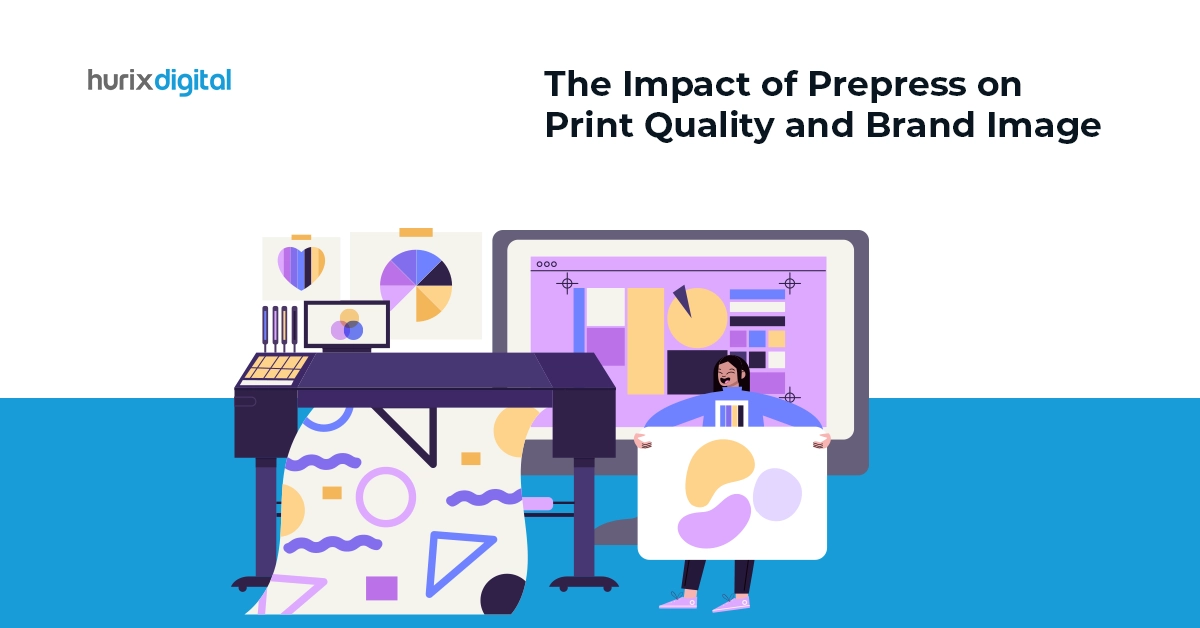The Impact of Prepress on Print Quality and Brand Image
In the competitive landscape of the printing industry, where quality and brand image are paramount, prepress techniques play a pivotal role in ensuring excellence. Prepress encompasses a series of processes and procedures undertaken before the actual printing stage, influencing the final output’s quality and consistency. This article delves into the profound impact of prepress on print quality and brand image, elucidating the significance of various prepress techniques, optimizations, and standards.
Table of Contents:
- Understanding Prepress Techniques
- Enhancing Print Quality Through Prepress Optimization
- The Role of Prepress in Elevating Brand Image
- Leveraging Prepress Solutions for Efficiency and Consistency
- Best Practices for Optimal Prepress Workflow
- Embracing Technology in Printing Prepress
- Conclusion
Understanding Prepress Techniques
Prepress techniques encompass a range of preparatory steps aimed at optimizing digital files for printing. These techniques include color correction, image enhancement, font embedding, and layout adjustments. By meticulously fine-tuning each element of the design, prepress ensures that the final print aligns with the intended vision while adhering to printing standards and specifications.
The Arsenal of Prepress Techniques:
Imagine a skilled craftsman with a specialized toolkit. Prepress professionals wield a similar arsenal of techniques, each addressing specific needs:
- File Preparation: Ensuring files meet required formats, resolutions, and specifications for flawless printing.
- Font Management: Converting fonts to outlines and embedding to avoid font substitution issues.
- Image Manipulation: Optimizing resolution, color correction, and image editing for print compatibility.
- Imposition: Arranging pages precisely for efficient printing on press sheets.
- Proofing: Meticulously reviewing layouts, colors, and content for accuracy before proceeding.
Enhancing Print Quality Through Prepress Optimization
Print quality enhancement is a core objective of prepress optimization. By employing advanced software tools and workflows, prepress professionals can rectify potential issues such as image resolution, color accuracy, and font compatibility. Prepress optimization ensures that every detail of the design translates seamlessly onto the printed page, maximizing clarity, vibrancy, and readability.
Also Read: The Latest Trends in Prepress Services: What You Need to Know
The Role of Prepress in Elevating Brand Image
In today’s competitive marketplace, brand image is synonymous with credibility, professionalism, and trustworthiness. Prepress plays a crucial role in shaping and maintaining this image by ensuring consistency across all printed materials, from business cards to marketing collateral. By upholding brand guidelines and standards, prepress reinforces brand identity and fosters customer loyalty.
Leveraging Prepress Solutions for Efficiency and Consistency
Prepress solutions encompass a suite of technologies and methodologies designed to streamline the prepress workflow while maintaining quality and consistency. Automation, digital proofing, and color management systems are among the key components of modern prepress solutions. By embracing these tools, printers can minimize errors, reduce turnaround times, and enhance overall efficiency.
Exploring Specialized Solutions
For truly exceptional results, delve into specialized prepress solutions:
- Color Management: Precise calibration and profiling ensure digital colors translate perfectly to physical outputs, maintaining brand consistency.
- Digital Prepress: Leveraging technologies like CTP (Computer to Plate) for faster and more efficient workflows.
- Prepress Standards: Following industry standards like PDF/X guarantees universal file compatibility and consistent reproduction across different printing environments.
- Prepress Automation: Automating repetitive tasks like text verification and image optimization minimizes errors and saves time.
Best Practices for Optimal Prepress Workflow
Effective prepress workflow requires adherence to established best practices and standards to ensure seamless integration with the printing process. This includes thorough file preparation, color profiling, and proofing procedures. By following standardized workflows and protocols, prepress professionals can mitigate risks, eliminate bottlenecks, and deliver exceptional results consistently.
To harness the full potential of prepress, consider these best practices:
- Early collaboration: Involve prepress professionals early in the design process for seamless communication and problem-solving.
- Transparent communication: Clearly communicate design intent, brand guidelines, and desired outcomes to the prepress team.
- Thorough file preparation: Ensure files meet the required specifications to avoid pre-press delays and potential issues.
- Rigorous proofing: Conduct multiple proofing cycles to catch errors before printing, protecting the brand image and finances.
- Investing in expertise: Partner with experienced prepress professionals who understand your industry and requirements.
Also Read: Hurix Mini-Book: PrePress Tips You Won’t Find Anywhere Else
Embracing Technology in Printing Prepress
Technology plays a transformative role in modern printing prepress, empowering printers to achieve new levels of efficiency and precision. From digital asset management systems to cloud-based collaboration platforms, technological innovations streamline every aspect of the prepress workflow. By embracing cutting-edge solutions, printers can stay ahead of the curve and meet the evolving demands of the industry.
Conclusion
At Hurix Digital, we understand the critical importance of prepress in achieving superior print quality and elevating brand image. Our comprehensive suite of prepress solutions combines advanced technology with industry expertise to deliver unparalleled results. Reach out to us to know more.

Gokulnath B is the Associate Vice President – Editorial Services. He is PMP, CSM, and CPACC certified and has 20+ years of experience in Project Management, Delivery Management, and managing the Offshore Development Centre (ODC).









